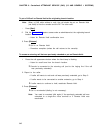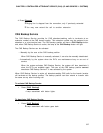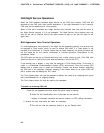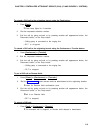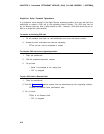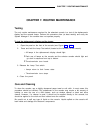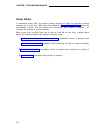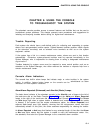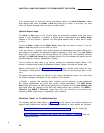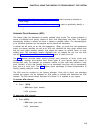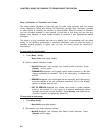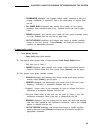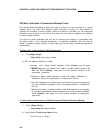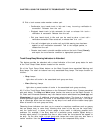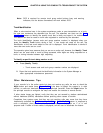
CHAPTER 8. USING THE CONSOLE TO TROUBLESHOOT THE SYSTEM
If the system does not have the remote maintenance option, the Alarm Reported or Ack
lamp remains dark when the Alarm or Alm lamp lights for an alarm. In this case, you must
notify the System Manager when an alarm condition exists.
.
Optional Alarm Lamps
The Alarm or Alm lamp on the console
alarms. If such information is required, a
does not distinguish between major and minor
feature button is administered as a Major Alarm
indicator in V3 and Generic 1 systems. The lamp lights steadily when a major alar-m trouble
occurs.
If both the Alarm or Alm and the Major Alarm lamps light, the alarm is major. If only the
Alarm or Alm lamp lights, then the alarm is minor.
In V3 and Generic 1 systems, other feature buttons are administered as trouble indicators for
links between the system and peripheral support equipment or other sites. The Link Failure
lamps light for major, minor, and warning alarms. (In systems with the Hospitality Services
package, the PMS Link Failure lamp indicates trouble in the link between the system and the
customer-supplied Property Management System.)
You can cause an alarm lamp to go dark by pressing the associated feature button. If the
trouble is cleared before system maintenance detects it again, the lamp will remain dark.
Buttons administered for the Facility Busy Indication feature provide alarm lamps for links.
The lamps on these buttons remain lighted as long as the links are active but go dark if a link
fails.
The system does not report link failures to the remote maintenance center. You must notify
the System Manager immediately of any indication of link trouble.
In Generic 1 systems, four hardware alarm indicators can be assigned to users associated
with system maintenance and users who monitor system performance. The PMS Printer
Alarm lamp lights when the PMS printer interface has a problem, and the Auto Wakeup Alm
lamp lights when the interface to the PMS Auto Wake printer has a problem. The SMDR 1
Failure-In and SMDR 2 Failure-In lamps light when the interface to the primary and
secondary SMDR output device, respectively, has a problem.
Features Used in Troubleshooting
The following features, listed earlier in Chapter 4, can be used by the console attendant for
simple trouble isolation and analysis. Step-by-step procedures for each feature are provided.
• Automatic Circuit Assurance (V2, V3, Generic 1 systems)—used for monitoring
possible trunk failures.
• Busy Verification of Terminals and Trunks (V2, V3, Generic 1 systems)—used for
placing test calls.
8-2



